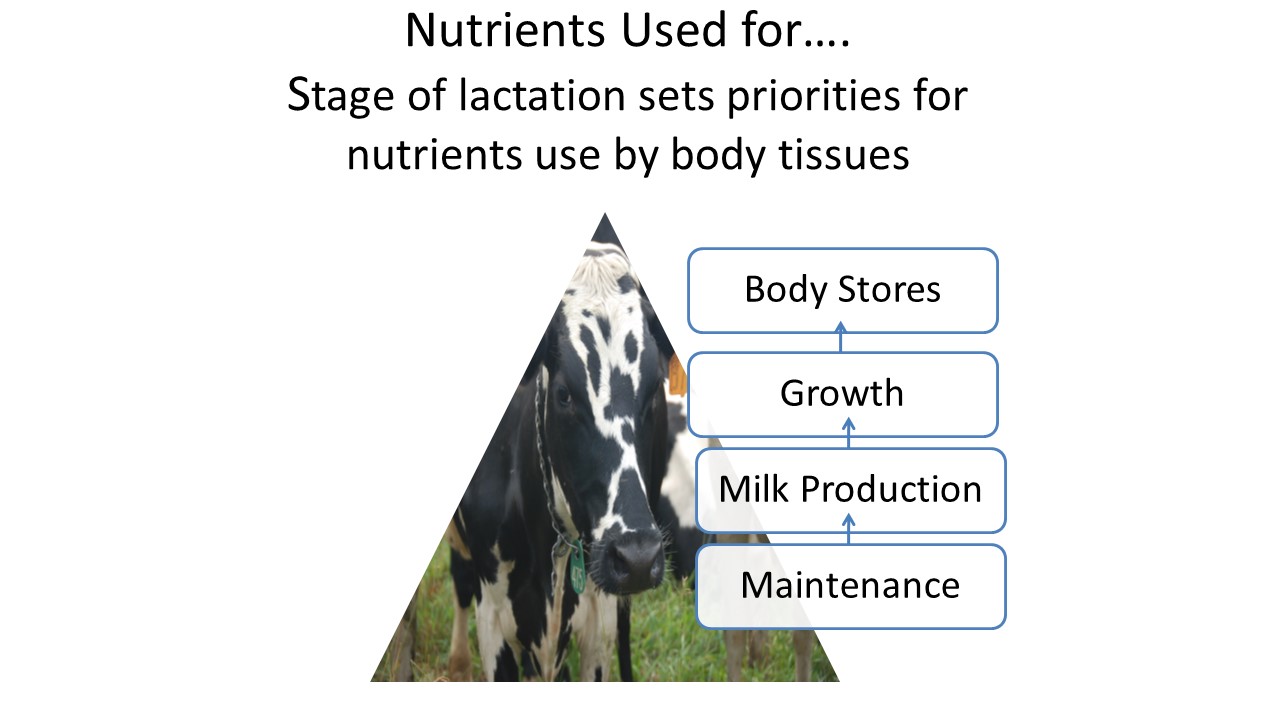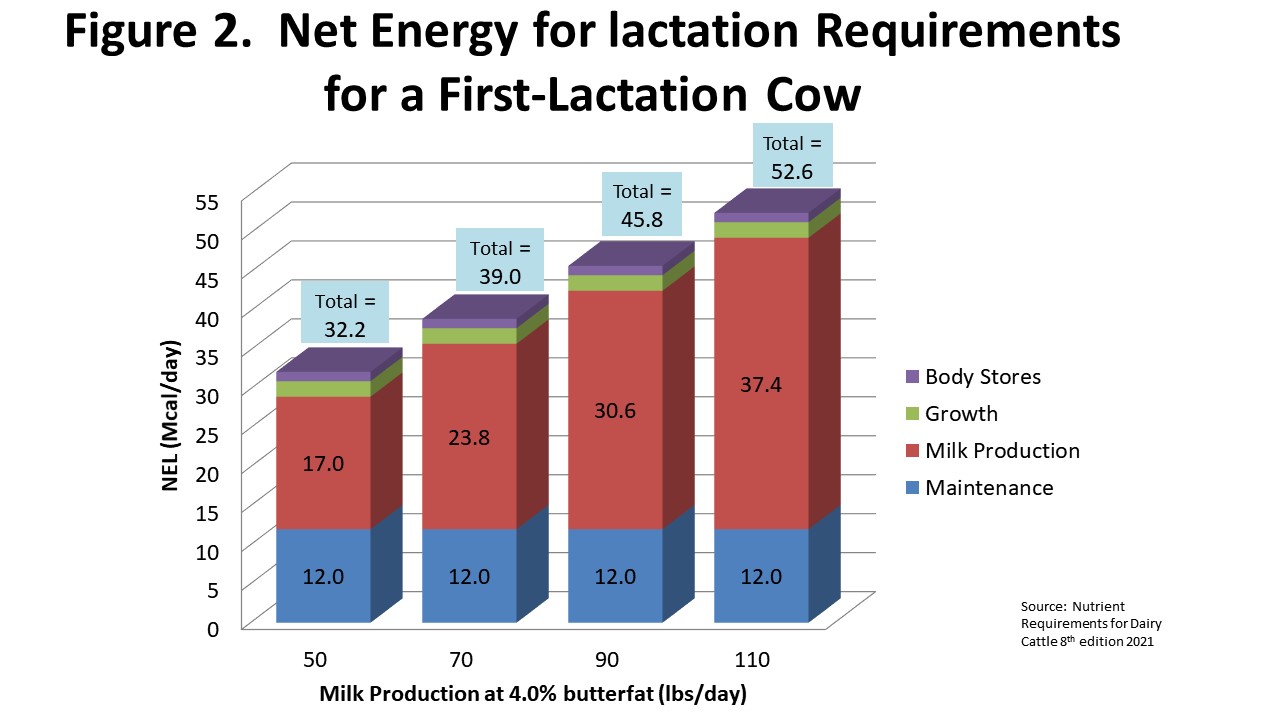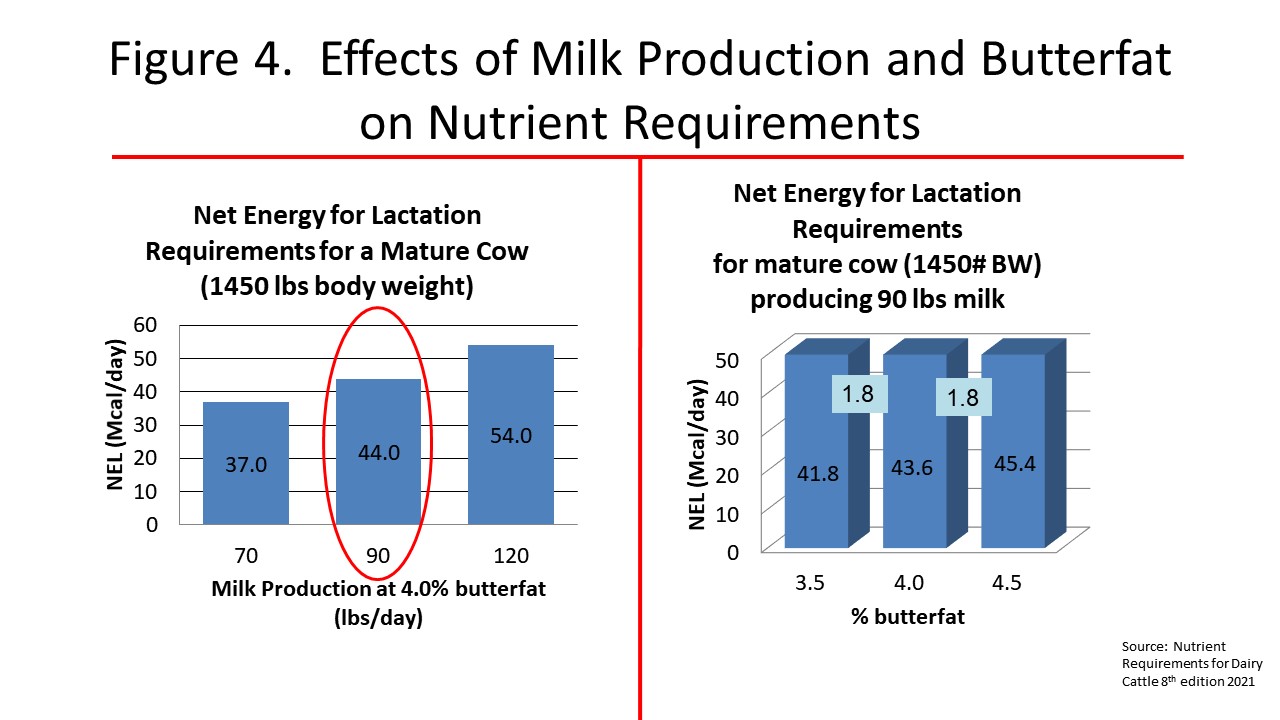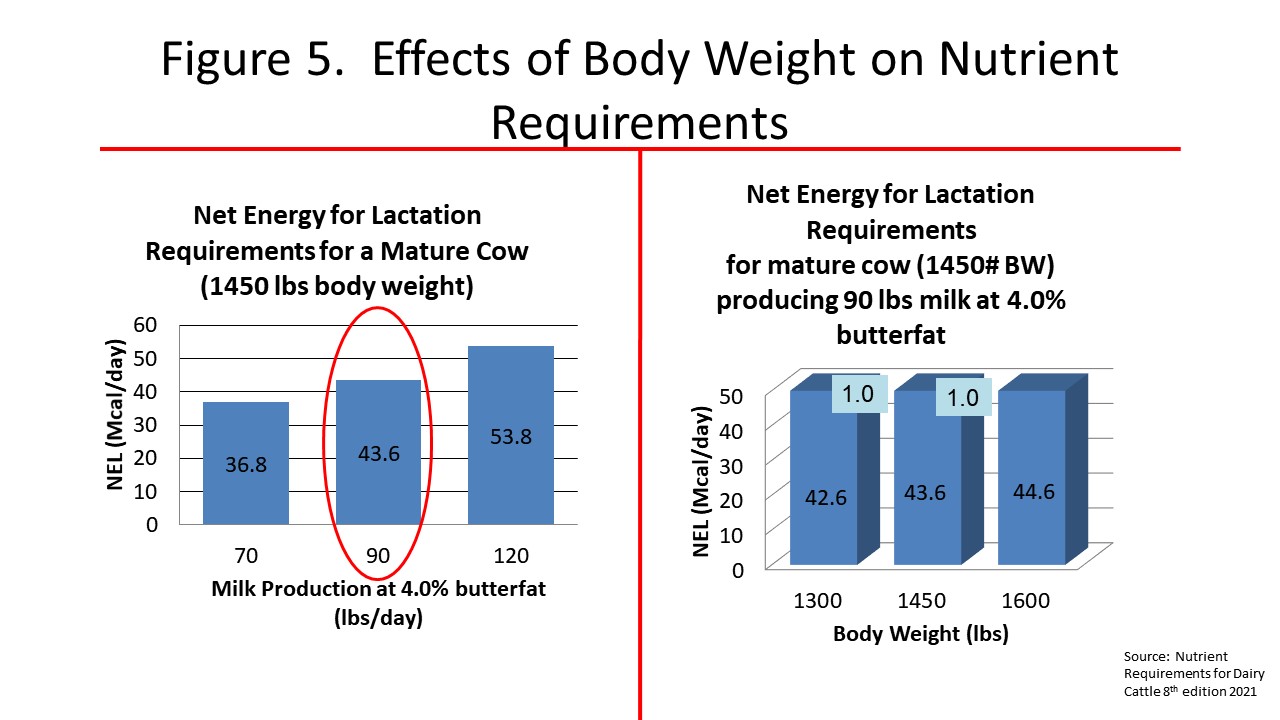What Factors have the Greatest Impact on Your Dairy Cows' Nutrient Requirements?
What Factors have the Greatest Impact on Your Dairy Cows' Nutrient Requirements?
Lactating dairy cows are high performance animals and, as such, they require a tremendous amount of nutrients. These nutrients are required to support basic life functions, known as maintenance, as well as the production of milk. These basic life functions, termed maintenance by nutritionists, include maintaining a cow’s body temperature, physical activity, and nutrients needed for essential metabolic processes used within cells and tissues. In mid to later lactation dairy cows, additional nutrients are needed to replenish body stores, such as fat (adipose tissue), muscle, and bone, utilized during early lactation to supply those not consumed through the diet. If these reserves are not replaced, dairy cows will not have them available to support milk production during the next lactation. Additional nutrients also are needed to support growth of the cow during the first and second lactation.
Nutritionists have tried to quantify requirements for various nutrients since the late 1800’s. From these research studies, requirements have emerged and are used when balancing diets for dairy cows. Understanding how requirements vary with milk production, butterfat test and other environmental changes can help you, the farmer, better communicate with your nutritionist and together design feeding programs that best meet the needs of your dairy cows.
Priorities for Nutrient Uses
Nutrients are used by lactating dairy cows to support needs for maintenance, milk production, additional growth of the cow during the first two lactations, fetal growth, and replenishing body stores. Development of the fetus requires extra nutrients, but these requirements are small in relation to the overall nutrient needs and are considered within the maintenance needs of the lactating cow until the last trimester of pregnancy (time frame where the majority of fetal growth occurs). In early lactation, cows use nutrients to support maintenance, milk production, and growth (in younger cows). Once these needs are met (usually in mid to late lactation), intake allows for more nutrients to be consumed than needed. The cow can utilize the extra energy and other nutrients to replenish body stores used during early lactation. But, body stores are only replenished after needs for maintenance, milk production and growth are met. These body stores then are used in the next lactation to support milk production when the needs for nutrients cannot be supplied through the diet. These body stores include energy stored in adipose tissue (body fat), protein (amino acids) stored in muscle, and calcium and phosphorus stored in the bones.

Practical implications:
- Body stores for use in the next lactation will not be replaced if inadequate energy, protein, minerals and vitamins are not provided during mid to later lactation of the current lactation. The cow will support maintenance and milk production first, then replace body stores. Cows are more efficient at restoring body fat, muscle and minerals in their bones while milking compared to after they are dried off.
- In first lactation cows, if inadequate energy is provided in mid to later lactation, the first lactation cow will grow and support the nutrient needs for maintenance and milk production. Body stores or fat covering will not be replenished. This often times results in sophomore slump- where second lactation cows do not peak as high as expected since they do not have the body fat stores to mobilize to support higher amounts of milk in early lactation.
Nutrient Requirements
Impact of milk production on requirements: The energy, protein, and mineral requirements of a dairy cow increase tremendously as milk production increases. Generally, energy is the first-limiting "nutrient" needed to support milk production in early lactation cows. Figure 2 illustrates how changes in milk production impact total energy requirements at 4 different milk production amounts. Energy requirements for maintenance, growth and replenishing body stores do not change significantly with changing milk production. Milk production alone results in the largest change in energy needs. For every 10 lb increase in milk production at 4.0% butterfat, 3.4 more Mcal of NEL is required.

However, maintenance becomes less of the total energy needs as milk production increases. As illustrated in figure 3, as milk production increases from 70 to 110 lbs of milk, maintenance needs, as a percentage of the total net energy required, decreases by 4% (27 vs. 23% of total energy needs) and the proportion used to support milk production increases from 61 to 71% of the total net energy required. These same trends occur with other nutrients such as fractions of protein, calcium and phosphorus. Thus, the cow becomes more efficient at using her feed intake to support the production of milk.

Bottom line: Milk production has the largest impact on the energy, protein, calcium and phosphorus requirements of a lactating cow!
Impact of butterfat content: When we compare the change in requirements with different butterfat contents of milk, they change very little especially relative to nutrient requirement changes seen when milk production changes. As illustrated in figure 4, decreasing the butterfat content of a first-calf heifer producing 90 lbs of milk from 4.0% to 3.5% only decreases the cow’s energy needs by 1.8 Mcal NEl or the equivalent of approximately 5 lbs of milk. Thus, fine tuning the butterfat content of a herd by a tenth or two does not have a major impact on the energy or other nutrient requirements of a lactating dairy cow.

Impact of changing body weight of cows: Changing the body weight of cows has a small impact on the maintenance needs of the cow and thus the overall nutrient needs. As illustrated in figure 5, changing the size of a mature cow from 1600 to 1450 lbs of body weight, only changes energy requirements by 1.0 Mcal NEL or the amount of energy needed to produce 3 lbs of milk. This small change in needs is due solely to changing requirements for maintenance and not other uses for nutrients. However, changing the weight of heifers or mature cows does greatly affect feed intake and our ability to deliver the needed nutrients to these cows. Thus, it is very, very important that we estimate the average body weight of cows as accurately as possible.

Practical Implications:
- Milk production of first lactation and mature cows has the greatest impact on nutrient requirements for energy, protein, protein fractions (ruminally undegradable protein (RUP) and ruminally degradable protein (RDP)), and minerals, such as calcium and phosphorus. Changing the butterfat percentage of milk has only a small impact on nutrient requirements. Thus, it is important that your nutritionist understands the average production for your herd and any changes that occur in production over the feeding year. From an average group or herd milk production, nutritionists may add additional milk production used to balance the diet to account for the variation in milk production of the group of cows and to challenge the fresher cows in the group.
- Body weight of cows does not have a great impact on total requirements. However, first lactation cows heifers eat less than mature cows and “larger” cows eat more than “smaller” cows. Thus, the concentration of each nutrient (not total amount per se) is adjusted to account for the changing feed intake. We also know that feed conversion to milk differs between cows.
Author: Donna Amaral-Phillips
